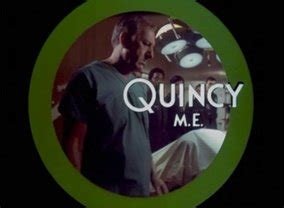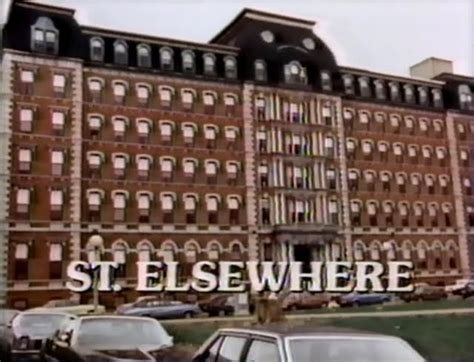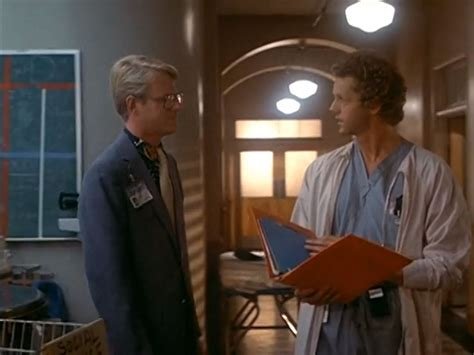State of the Shea EXTRA: Good Forefathers for “The Good Doctor” Pt. 3
Our exploration of long-running and/or otherwise significant series in medical dramas moves on to PART 3!
The Good Doctor lasted 7 seasons – a total of 126 episodes– on ABC. Though a select few medical dramas (and comedies) have had longer runs (much longer!), TGD stands among a dozen or so since the early days of TV that reached the coveted Season 7 mark.
Click here to read about the earliest ones I covered in Part 1 of this State of the #Shea EXTRA (Medic, Dr. Kildare, Ben Casey).
Click here to find out about the shows covered in Part 2 (Marcus Welby, Medical Center, The Bold Ones, Emergency!)
In part 3 we move on to the progressions of the late 70s, 80s, and 90s! Let’s get started:
QUINCY, M.E.
Aired on: NBC
Seasons: 8 (1976-83)
Episodes: 148
Knowing that “M.E.” stands for Medical Examiner means understanding the main thing that sets Quincy apart from others in the genre. For Dr. Quincy was a forensic pathologist– the doctor who examines people after they’ve died in hopes of determining a cause of death. So traditional hospital scenes were less frequent, while autopsies (and investigations about them) were the mainstay, bringing police into the story more often than fellow doctors. Consequently, Quincy was classified as a mystery medical drama.
In fact, it started as part of NBC’s rotating Sunday Mystery Movie, taking turns in the timeslot with fellow dramas Columbo, McCloud, and McMillan and Wife. But Quincy was such a breakout hit that it “broke out” and got its own timeslot after just four episodes.
In a few ways, Quincy followed medical drama protocol: a passionate title doctor (played by Jack Klugman, who was fresh off of the Emmy-winning comedy The Odd Couple)... a relatively young protege (played by Robert Ito, one of only SIX actors of Asian descent to be a TV cast regular in the ‘70s)... and a pompous boss (Dr. Astin) who often served as Dr. Quincy’s foil.
But the series is better recognized as being the first to feature in-depth forensic investigations, which came to be the heart and soul of the CSI: Crime Scene Investigation series franchise, the NCIS series franchise, and numerous other detective series of the late 20th/early 21st century. It was also one of the first medical dramas to devote entire episodes to social issues with loose ties to medicine, including airline safety (brought to Dr. Quincy’s attention during a rescue mission), hazardous waste dumping, and upticks in handgun usage. Sometimes the subject matter took Dr. Quincy all the way to Washington D.C.; in one instance, his portrayer (Klugman) testified before U.S. Congress in real life on behalf of a topic covered on the show!
Here’s a clip of “Quincy” (his first name was never mentioned) doing what he did so well…getting himself in trouble while doing what he believed was right. In this case, “trouble” meant actual jail time:
TRAPPER JOHN, M.D.
Aired on: CBS
Seasons: 7 (1979-86)
Episodes: 151
Some TV dramas are “spinoffs” of other TV dramas (as The Good Lawyer would have been a spinoff of The Good Doctor, had it been picked up by ABC). Some TV sitcoms are “spinoffs” of other sitcoms, as Laverne & Shirley was of Happy Days. But in the late 70s, we also got two dramas starring former supporting characters of hit sitcoms. One was Lou Grant (born from The Mary Tyler Moore Show). The other was Trapper John, M.D. (from M*A*S*H).
If Trapper John was an unrecognizable spinoff to some, that’s because it took the relatively young character from the Korean War-era comedy and moved him to present-day (over 25 years later), where he was Chief of Surgery at San Francisco Memorial Hospital. Trapper bore many similarities to medical dramas before it in that the titular character was the experienced, father-figure type who wasn’t afraid to challenge the system for his patients’ sake. And he worked alongside Gonzo Gates, a younger doctor (and fellow veteran, having served in Vietnam) with a passion for life… and a shower scene included in the opening credits. (Yeah, that’s right, adolescent me remembered that part VERY well.)
The Good Doctor fans… remember when S4 “newbie” Enrique Guerin lived in an RV in the St. Bon’s parking lot?
That was surely a nod to Trapper, which had Gonzo living alongside San Francisco Memorial in a grungy-looking motor home dubbed “The Titanic”. As I recall, many Trapper episodes concluded with these two chilling out on “The Titanic”’s rooftop.
Both Quincy and Trapper, for all their success on their respective networks, had less than remarkable endings. In the case of Trapper, the final four episodes didn’t even air until they were “burned off” in late summer, 1986– three months after the season ended!
This next series didn’t have that problem…
ST. ELSEWHERE
Aired on: NBC
Seasons: 6 (1982-88)
Episodes: 137
Thanks to the influence of the widely-acclaimed cop drama Hill Street Blues in 1981, the medical drama genre followed suit one season later with St. Elsewhere (described early on as “Hill Street Blues in a hospital.”)
MTM Enterprises produced both series, and both introduced “gritty realism” to TV by way of more handheld cameras, tighter shots, and quicker-paced editing With St. Elsewhere, the “grit” was enhanced by the dilapidated St. Eligius hospital itself (set in Boston’s South End).
The storyline structures of future medical dramas evolved during St. Elsewhere’s run– some came and went in a single episode, while some took much longer to resolve. The latter tended to involve the medical staff, and with an ensemble cast (featuring as many as 16 characters in the opening credits!), there were plenty of intertwining tales to tell. And unlike the paragon-of-virtue TV doctors of decades gone by, these were wonderfully human (and wonderfully flawed) men and women whose personal lives often informed their professional ones… for better or worse!
Such a large cast was bound to include some future stars; in fact, St. Elsewhere alumni include Ed Begley Jr., Howie Mandel (when he still had a head of dark curly hair), Mark Harmon, and a young Denzel Washington– who picked up his first of two Academy Awards just a year after his TV gig was canceled!
Though it never performed better than 47th in the annual Nielsen Ratings, St. Elsewhere did well with the 18-49 age demographic and was beloved by critics, racking up 13 Emmy wins during its run.
It also brought unique episodes such as one partially shot in black-and-white (tracing the hospital’s history), an episode that paid homage to the classic stage play Our Town, and even one that ended with a resigning veteran doctor dropping his pants and telling the new owners of the hospital to kiss his ass. (Yes, it was approved by NBC censors!) And I can’t help but wonder if TGD’s Glassman would have ever considered doing the same, had Salen Morisson (of Ethicure infamy) been a man…?
In its 1988 finale, St. Elsewhere also created one of the most talked-about final moments of any TV series to that point…
This was widely interpreted to mean the entire world of St. Eligius that viewers had come to know over those 6 years was created via the imagination of a non-verbal autistic boy. It was a mind-blowing twist at a time when series finale “shockers” were few and far between– and for TGD fans, perhaps an intriguing look at the way autism representation on TV has evolved since then.
(If you watch the entire clip above, you’ll see how Mimsie the Cat (a.k.a. the MTM Enterprises mascot) gets involved in the show’s demise… which is sad all by itself!)
CHICAGO HOPE
Aired on: CBS
Seasons: 6 (1994-2000
Episodes: 141
In September 1994, two medical dramas were set to premiere in prime time. One was thought to become a breakout hit. The other one was ER.
In fact, CBS’ Chicago Hope (starring veteran actors Mandy Patinkin, Hector Elizando, and Adam Arkin) was initially scheduled for Thursday nights in head-to-head competition with NBC’s ER (featuring a lesser-known cast, including some guy named George Clooney…?). But Hope drew 11.2 million viewers that first year, while ER came away with just over 30 million.
What differed between the two medical dramas can be boiled down to the things stated in this Entertainment Weekly article from 30 years ago…
Chicago Hope is a Marcus Welby continuation where the surgeons are superheroes, versus a very human, down-to-earth portrayal in ER.
(Marcus Welby M.D., you’ll recall, was a hit medical drama of the 1970s.)
All that being said, Hope’s focus on complex characters and well-written storylines– as well as a stellar cast that came to include Christine Lahti, Thomas Gibson, Mark Harmon (formerly of St. Elsewhere), Vondie Curtis-Hall, and Carla Gugino– kept it going for six seasons, winning seven Emmys along the way.
As mentioned above, ER was a monster hit that had a 15 season run. In fact, the only TV medical drama to last longer is Grey’s Anatomy (20 seasons and counting). I’ve refrained from writing about those two, along with M*A*S*H (11 seasons), Scrubs (9 seasons), and maybe a couple others, primarily because they were such anomalies in the genre of medical drama. But if you’d like me to write a post about them for this “EXTRA” collection, please leave a comment saying so! If there’s enough interest I may change my mind!
In any case… thanks for taking this detour through TV history with me!













